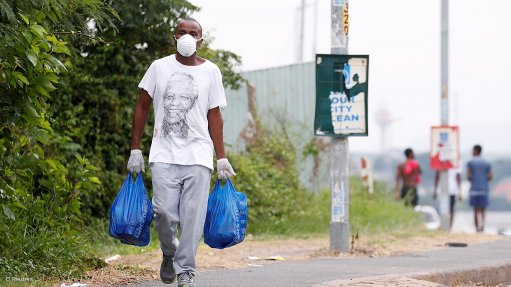
Special purpose vehicle (SPV) Kekkelbek Solutions is proposing the use of technology that could be deployed nationwide within 72 hours to track and trace people, through their mobile numbers, that have come into contact with a person who has tested positive for Covid-19.
The Trace Track Digital Response (TTDR) system is a digital response ecosystem solution that was developed specifically for government intelligence that allows for the assignment of an anonymous “hashtag identification” of a Covid-19-infected person.
The system, which is compliant with all privacy laws – and without the need for the downloading of any applications on a mobile phone - provides stakeholders information of who is sick, where they have been and who has subsequently been exposed to an infected person over the prior two weeks.
It also has the capability of monitoring the movement and compliance of identified subjects through digital fencing, generating an alarm that would alert the relevant controllers should they move out of a predefined area.
“The key to containing any epidemic is identifying individuals who are infected, isolating them and tracking down their contacts, who should also quarantine themselves for a period of time,” says Kekkelbek management.
Widely available testing and the ability to trace contacts are critical to have the ability to move seamlessly between level 1 and 5 of the nationwide Covid-19-induced lockdown; however, while testing capacity is growing, public health authorities are extremely limited in what they can do to accurately figure out who might have been exposed without the intelligence of knowing who is infected and where they are and have been.
Through the TTDR system, once tested, a person’s location history can now be tracked through geolocation data to warn others, through an sms, WhatsApp message or call, who may have been in contact with a potentially infected individual to get tested and self-quarantine.
The collaborative SPV ingests data from various sources, including devices, systems and programmes; processes and filters data; and transforms the big data, using artificial intelligence to predict potential hot spots, and subsequently providing intelligent information for action on hot spots to contain the spread of the virus.
The TTDR system will leave the identity of a patient’s care to the health authorities and it will send a notification to the patient of the nearest conveniently located healthcare facility.
The TTDR system will confirm the information provided by the patient in their original medical records by tracing the movement of the patient’s cellphone over the previous 14 days to ensure the patient’s contact list is complete and accurate.
The patient’s contact list will be further updated based on the location of their hashtag phone among other hashtag phones in the areas that have been identified as either positive or negative.
This will allow authorities to follow up and contact others for further testing and additional medical interventions as required.
Tried-and-tested, the fully-adjustable and customisable system is available and ready to deploy, with the system successfully proven and deployed in other countries. This same system is being successfully used in South Korea, Singapore and Taiwan.
The company is awaiting feedback following a submission to the National Command Centre, through the Department of Transport, for its potential deployment in South Africa.